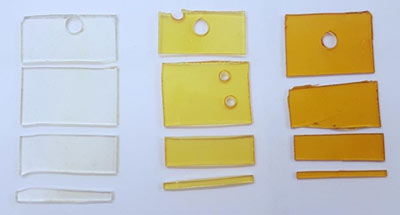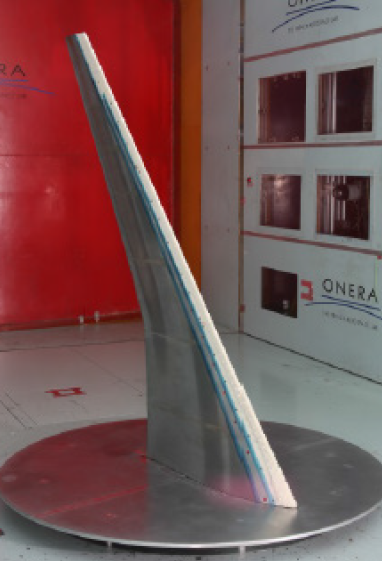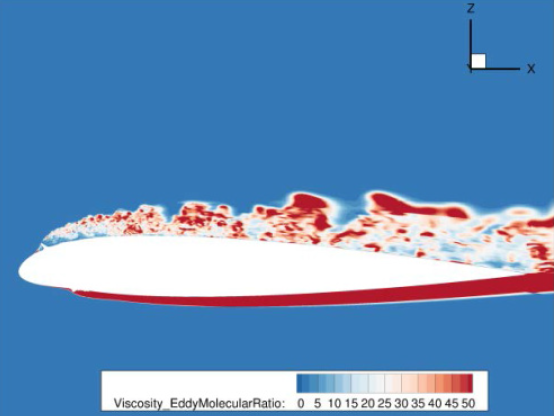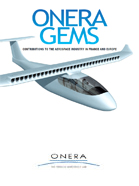The MFE Scientific Domain

Laurent Jacquin
Scientific Director of the
Fluid. Mechanics and Energetics domain
Highlights.
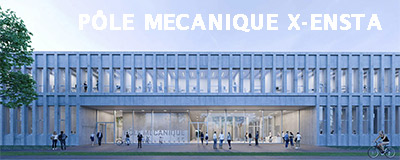
Some of ONERA's aerodynamics, acoustics and aeroelasticity teams, currently based at the Meudon and Châtillon sites, will be relocating to a site in the immediate vicinity of the new "Pôle de Mécanique" building at the École polytechnique and ENSTA ParisTech, and not far from ONERA's Palaiseau center, with a view to developing joint research projects, particularly in the defense sector (2024).
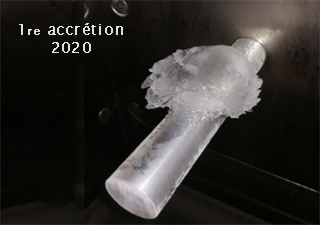 An ice research wind tunnel was commissioned in 2020 at ONERA's Toulouse center. It will be used for fundamental studies, mainly on the impact of large supercooled droplets under icing conditions. The acquisition of experimental data will help develop and validate simulation tools in line with new certification processes.
An ice research wind tunnel was commissioned in 2020 at ONERA's Toulouse center. It will be used for fundamental studies, mainly on the impact of large supercooled droplets under icing conditions. The acquisition of experimental data will help develop and validate simulation tools in line with new certification processes.
MFE in brief.
This domain covers research into the aerodynamics and propulsion of aeronautical and space vehicles. This research is carried out by the Aerodynamics, Aeroelasticity, Acoustics (DAAA) and Multiphysics for Energetics (DMPE) departments respectively. The aim is to enhance the performance and safety of current vehicles, and to develop new, more economical and environmentally-friendly configurations.
In aerodynamics, we study the fundamental phenomena - turbulence, lift-off, vortices, shock waves, etc. - that limit aircraft performance, as well as their coupling with structural behavior (aeroelasticity); their contribution to noise (aeroacoustics) is also a major research topic.
In the field of energy, the development of more efficient and less polluting propulsion systems relies on the mastery of different types of combustion (liquid, solid, hybrid) and on the design and characterization of new fuels. This field also covers research into the coupling of different physics, such as the behavior of materials subjected to intense heat flows (during atmospheric re-entry, for example), or the formation of ice on sensitive aircraft surfaces.
This research is based on the use of extensive experimental resources (wind tunnels, test benches), software tools piloted by the Advanced Numerical Simulation (SNA) scientific domain, and the supercomputing capabilities of ONERA and its partners.
Adjoints scientifiques des départements
MFE themes
The MFE domain encompasses 14 scientific themes divided between two ONERA departments - Aerodynamics, Aeroelasticity, Acoustics (DAAA) and Multiphysics for Energetics (DMPE).
- Acoustics: sources, propagation and impact DAAA - DMPE
- Flow control DAAA
- Development of measurement techniques and experimental setups DAAA - DMPE
- Jet dynamics DMPE
- Free-flow dynamics DAAA
- Wall-bounded flow dynamics DAAA - DMPE
- Hypersonic flows DAAA - DMPE
- Multiphase flows DMPE
- Reactive flows DMPE
- Exploitation of experimental and numerical data DAAA - DMPE
- Energetic materials, emissions and atmospheric dispersion DMPE
- Icing Physics DMPE
- Heat transfer and material degradation DMPE
Acoustics: sources, propagation and impact
DMPE Frank Simon, Aurélien Génot (@onera.fr).
- Aircraft internal noise
- Source characterization
- Acoustic impedance models
- Propagation in inhomogeneous flow
Examples
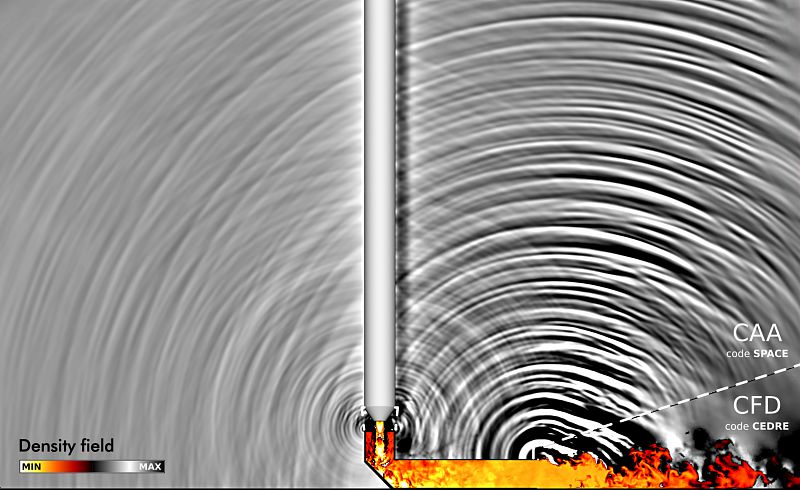 Adrien Langenais' thesis “Adaptation of aeroacoustic methods and tools for interacting jets in the context of space launchers” (with CNES)
Adrien Langenais' thesis “Adaptation of aeroacoustic methods and tools for interacting jets in the context of space launchers” (with CNES)
DAAA Maxime Huet, Patrice Malbéqui (@onera.fr).
- Acoustic propagation in heterogeneous flows
- Modeling broadband and tonal noise sources
- Installation effects of acoustic sources on aircraft
- Noise reduction technology
- Impedance models for absorbing materials
- Sonic boom
- Wind tunnel measurements and flight tests
- Locating noise sources using microphone arrays
- Noise pollution and environmental impact
Examples
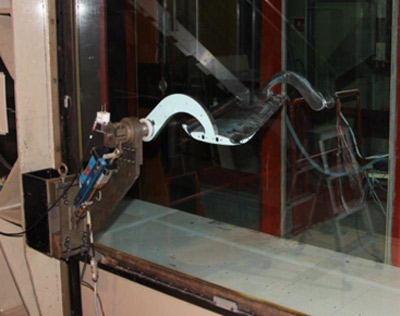
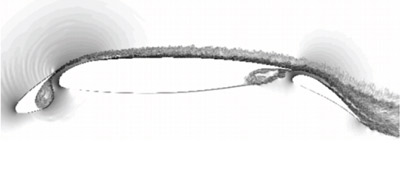
HiLiNo (High Lift Noise) Generate a database to better understand the physics of noise generation and validate numerical simulation methods for the noise of civil aircraft high lift systems, a major component of approach noise.
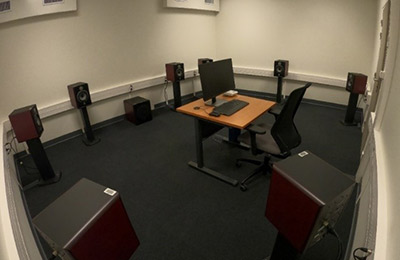
CIGALE, MOTUS A better understanding of the annoyance or noise generated by aircraft. This listening room will make it possible to link the annoyance felt when an aircraft flies over to individual and societal factors, or to evaluate the annoyance generated by different noise reduction technologies, for example.
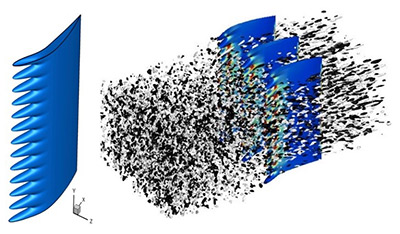
InnoSTAT (Innovative Stator) Reduce the noise of civil aircraft engines by reducing the interaction between turbulence and the leading edge of the fan stator. The shape of the serrations is optimized using CAA (Computational AeroAcoustics) calculations.
Flow control
DAAA Colin Leclercq, Nicolò Fabbiane (@onera.fr).
- Actuators (development, characterization, performance estimation, optimization, sensitivity and distributed control)
- Numerical modeling (source term, chimera, IBM...)
- Adjoining methods
- Open loop
- Closed loop
- Synthesis of control laws
- Reduced models
Example
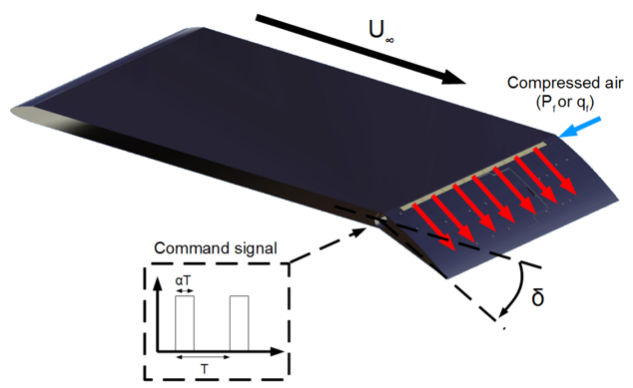 FLUIDYCON Fluid Dynamics Control The main aim of the project is to develop control methods for fluid dynamics phenomena. This objective is of course accompanied by both numerical and experimental demonstrations (in a research wind tunnel). Validations on highly complex numerical models and experimental benches are also targeted.
FLUIDYCON Fluid Dynamics Control The main aim of the project is to develop control methods for fluid dynamics phenomena. This objective is of course accompanied by both numerical and experimental demonstrations (in a research wind tunnel). Validations on highly complex numerical models and experimental benches are also targeted.Development of measurement techniques and experimental setups
DMPE Arnaud Ristori, Jean-Yves Lestrade, Mikael Orain (@onera.fr)
- Optical setups and diagnostics
- Sensors
- Signal processing and mass data processing methods and tools
- Measurement of physico-chemical properties in complex flows and real-life conditions
- Assembly sizing tools
- Design and improvement of fixtures and test equipment
Example
Optical diagnostics such as laser-induced incandescence/fluorescence, PIV and spectroscopy are specifically designed and integrated on ONERA test benches to characterize combustion under conditions similar to those encountered in aircraft engines. A major effort is being made to bring together the necessary skills in fields such as optics, combustion, fluid mechanics and thermodynamics to create the necessary support for the development of the new generation of less polluting propulsion systems.
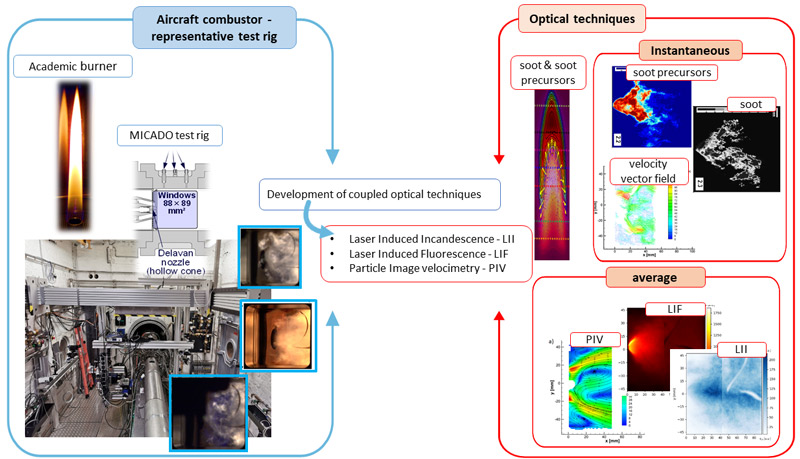
DAAA François Nicolas, Geoffrey Tanguy (@onera.fr).
validé
- Optical surface metrology (TIR, MDM, PSP, TSP, friction, etc.)
- Optical field metrology (PIV, PIV3D, Holography, BOS)
- New sensors
- Big data processing
- Control of non-dimensional parameters, uncertainties and measurement noise
- Improvement of ground testing facilities
Example
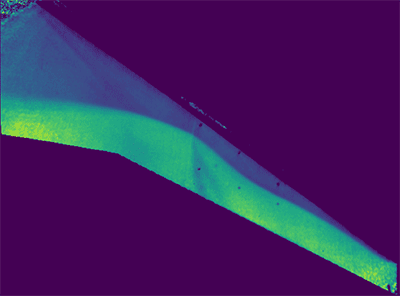

CARACAL - Aeroelastic tailoring of flexible wing to alleviate gust load. Thanks to unsteady pressure-sensitive paint (PSP) and model deformation measurements (MDM) the aeroelastic response of the structure has been characterized. This wind tunnel test campaign will be used to validate the design of future composite structures
Jet dynamics
DMPE François Vuillot, Adrien Langenais (@onera.fr).
Dynamics of free-shear flows
DAAA Fabien Gand, Marie Couliou (@onera.fr)
- Vortex flows and wakes
- Free, underflowing, rotating, transverse jets
- Back bodies
- RANS and hybrid RANS-LES turbulence models
- Reconstruction of turbulent fluctuations
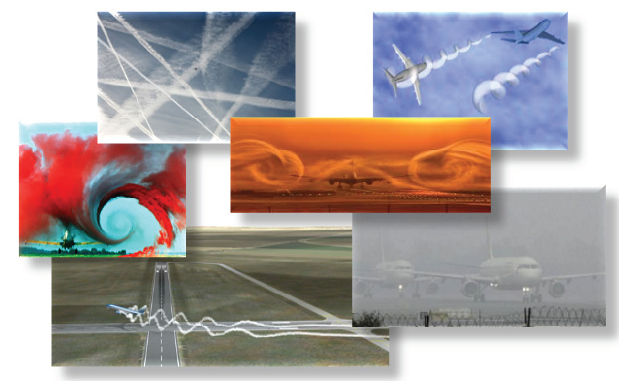
EASA (Aero-thermo-chemical evolution in aircraft wakes, ONERA project). Challenges addressed: control of wakes and contrails; extension of the simulation distance downstream of the aircraft by HPC optimization and mesh optimization techniques, with the ambition of bridging the gap between the fields dealt with by aerodynamicists and climatologists; optimization of aircraft geometry based on multiple criteria, including vortex wake evolution and environmental impact.
Wall-bounded flow dynamics
[CNU 60] [CoCNRS 10]
DAAA François Richez, Nicolas Renard (@onera.fr)
DMPE François Chedevergne, Jean-Philippe Brazier (@onera.fr)
- Subsonic, transonic and supersonic regimes
- Laminar-turbulent transition
- Transitional separation bubbles
- Receptivity to roughness, acoustic excitations and external turbulence
- Transition models
- Linear and non-linear stability
- Turbulence
- Shock-boundary layer interaction
- Buffet
- 2D, 3D separation
- Stall
- Surge/Buzz
- Corner flows
- Low Reynolds flows
- RANS and hybrid RANS-LES turbulence models
- Wall laws
- Reconstruction of turbulent fluctuations
Example
FROTTEMENT Better physical understanding of viscous drag generation; improved friction measurement techniques and ways to implement them in ONERA wind tunnels; improved turbulent friction modeling, new models that can be implemented in major ONERA industrial codes.
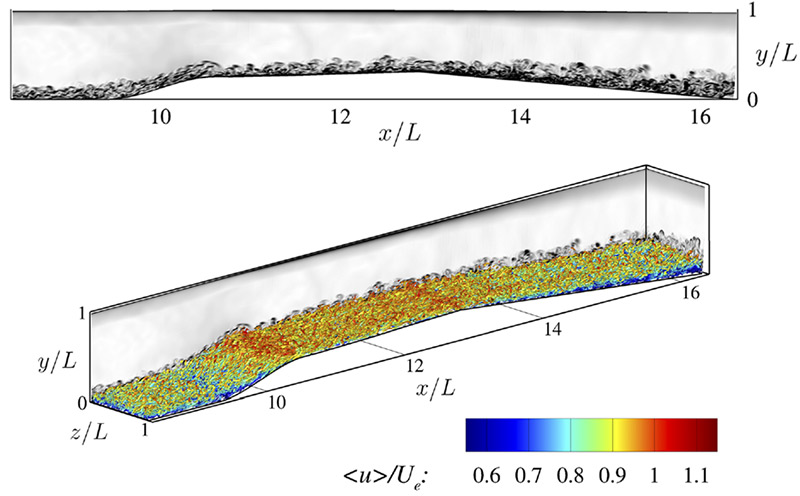
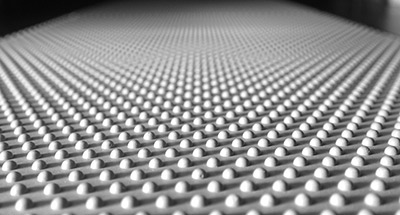
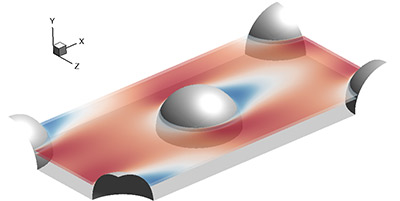
Hypersonic flows
DMPE Julien Labaune, Ysolde Prévereaud (@onera.fr).
- Cold and hot hypersonics
- Transition, turbulence and heat flux modeling
- Hyperenthalpic flows
- Chemical and vibrational imbalance effects
- Rarefied gas effects
- Application to atmospheric re-entry and super-ramjet
DAAA Reynald Bur, Guillaume Begou (@onera.fr).
- Cold hypersonics
- Transition
- Turbulence
- Modeling
- Heat flux
- Shock drag
- Viscous drag
- Bottom drag
- Control surfaces
Example
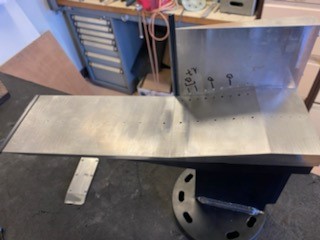
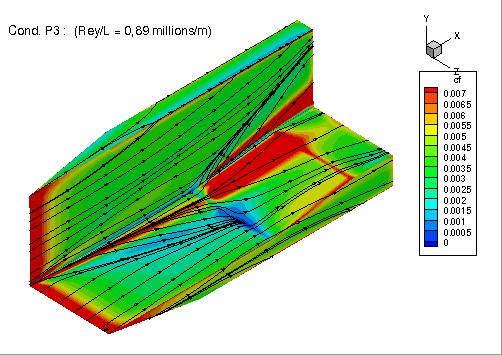 MOPPHYP Modeling of physical phenomena related to hypersonics Advance numerical, theoretical and experimental tools: simulation of the high Mach number transition, modeling of parietal turbulence outside adiabatic equilibrium, understanding the dynamics of shock wave/boundary layer interactions.
MOPPHYP Modeling of physical phenomena related to hypersonics Advance numerical, theoretical and experimental tools: simulation of the high Mach number transition, modeling of parietal turbulence outside adiabatic equilibrium, understanding the dynamics of shock wave/boundary layer interactions.Multiphase flows
DMPE Clément Le Touze, Davide Zuzio (@onera.fr)
- Dispersed-phase flows
- Phase-separated flows
- Free surface flows
- Atomization
- Liquid films
- Transfers at interfaces
- Capillary phenomena
- Two-phase jets
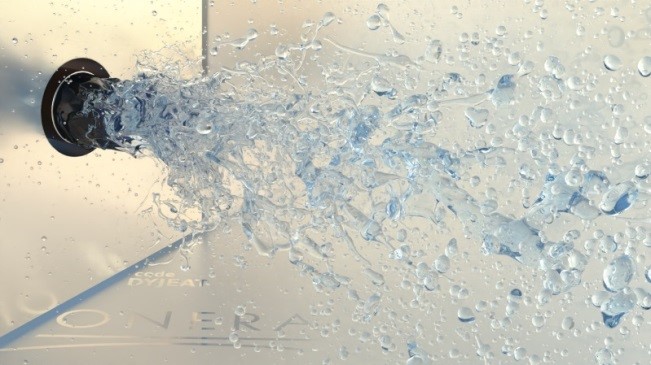 FIRMAMENT - DNS of assisted atomization in a rocket engine injector. HPC Direct Numerical Simulation (DNS) of two-phase flows makes it possible to reproduce and characterize the complex dense liquid flow occurring at the injector outlet. The aim of these simulations is to gain a better understanding of the phenomena involved, and to feed larger-scale models for the industrial calculation of combustion chambers.
FIRMAMENT - DNS of assisted atomization in a rocket engine injector. HPC Direct Numerical Simulation (DNS) of two-phase flows makes it possible to reproduce and characterize the complex dense liquid flow occurring at the injector outlet. The aim of these simulations is to gain a better understanding of the phenomena involved, and to feed larger-scale models for the industrial calculation of combustion chambers.
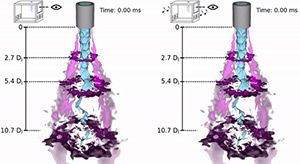
LES of a two-phase jet under the influence of high-amplitude acoustic waves
.
Reactive flows
DMPE Dmitry Davidenko, Guillaume Pilla, Nicolas Bertier (@onera.fr).
- Combustion
- Thermodynamics of real gases and mixtures
- Ignition and extinction
- Pollutant emissions
- Combustion noise
- Engine jets
- Combustion instabilities
Example
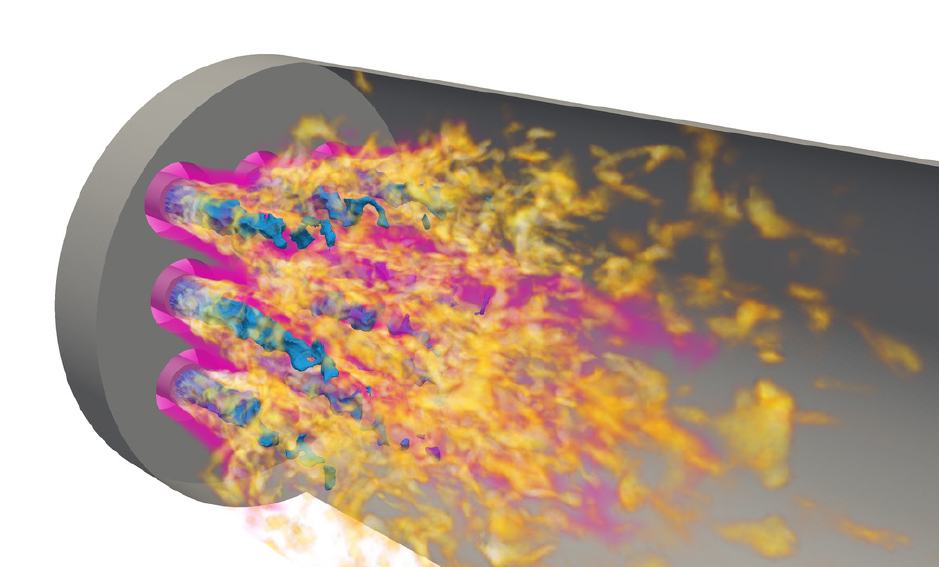
COMETH Oxygen-methane cryogenic combustion In the field of liquid propulsion, provide additional building blocks for modeling and understanding, with a view to simulating the ignition and ramp-up of a rocket engine in the longer term. Provide support during the design phase and in the event of an incident encountered by industry.
Exploitation of experimental and numerical data
DMPE David Donjat, Nicolas Fdida (@onera.fr).
- Signal processing
- Data fusion
- Data assimilation
- Inverse methods
- Quantification and propagation of uncertainties
- Reduced models
- Segmentation in image processing
- Learning techniques
- POD, sPOD, DMD
- Multi-scale analysis
Examples
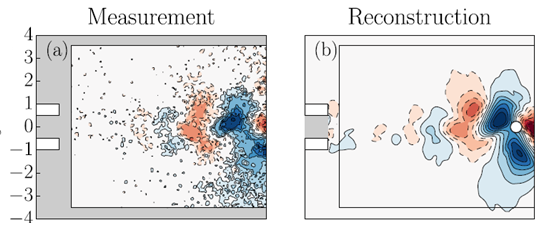
ARENE - Assimilation for the reconstruction of numerical and experimental flows The aim is to equip ONERA with data assimilation methodologies and algorithms to tackle a large number of flows of aerospace interest: develop advanced numerical tools, and determine experimental protocols leading to optimal final characterization.
DAAA Olivier Marquet, Samir Beneddine (@onera.fr).
- Uncertainty propagation
- Learning techniques
- Mathematical input/output reduced models
- Fusion, Data Assimilation
- POD - DMD - SVD
- Drag extraction
- Detection and parametric identification of structural non-linearities
- Acoustic source identification
- Noise propagation
- Acoustic detection of moving objects
- Non-linear dynamics applied to aircraft
- Flight dynamics in inhomogeneous and unsteady environments
Energetic materials, emissions and atmospheric dispersion
DMPE Ismael Ortega, Nicolas Bonne (@onera.fr).
- Degradation and physicochemical analysis of fuels, propellants and storable liquid propellants
- Formulation
- Aging
- Material compatibility
- Coking
- Emissions characterization
- Aerosols
- Soot
- Condensation trails
- Airport air quality
Examples
3D numerical simulation of contrails with the CEDRE code, coupling aerodynamics, chemistry and microphysics, using a realistic configuration of a 777 aircraft.
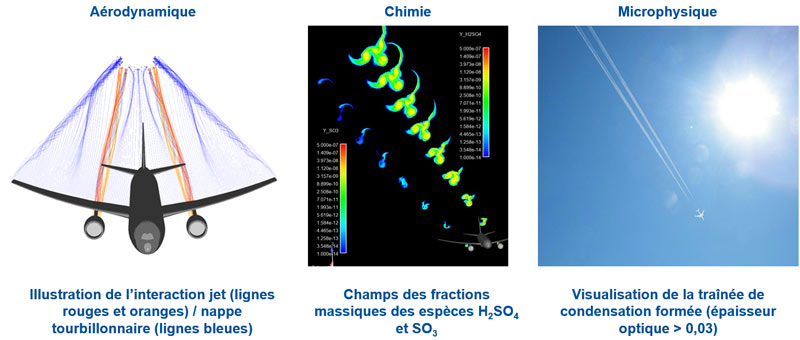

EMPIRE Study and measurement of particles from jet engines Systematic evaluation of the impact of fuel composition on emitted or induced particles (volatile and non-volatile), carried out on a device replacing an aircraft engine
Icing Physics
DMPE Emmanuel Radenac, Lokman Bennani (@onera.fr)
- Ice accretion
- Thermal and mechanical ice protection systems
- Ice adhesion, fracture and shedding
- Droplet-wall interactions, SLD ("Super-cooled Large Droplets")
- Ice crystals
Example
SUNSET2 Studies on scling effects due to ice In collaboration with NASA, improving ice accretion codes (ONERA's IGLOO3D) and assessing the accuracy required on 3D ice shapes to predict performance degradations on large swept wings.
Numerical work was carried out (improvement and benchmarking of the IGLOO3D code, performance degradation calculations with elsA, using the classic body-fitted method or immersed boundaries (IBM)), as well as tests in the F1 wind tunnel.
ONERA's icing wind tunnel has delivered its first results in the H2020 ICE-GENESIS project to study the accretion of Supercooled Large Droplets (SLD) onto the surfaces of aeronautical structures. These large drops are present in freezing or freezing rain and constitute a risk for transport aircraft, the control of which is essential in the aircraft certification process. This initial database will enable current icing models to be extended.
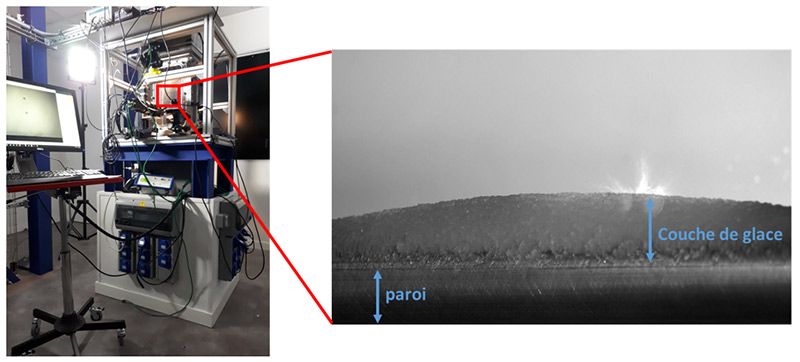
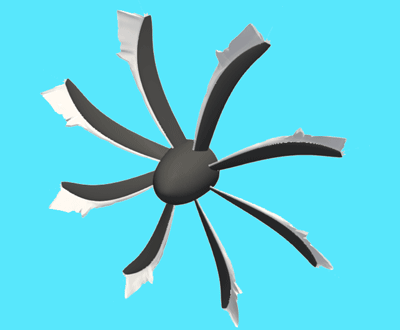
Simulations of ice accretion on a propeller were carried out during the Flying Whales project to estimate the effects of ice on airship components. This figure illustrates an accretion calculation on a 4m diameter propeller rotating at 800 rpm. Three solvers were involved: elsA for aerodynamics, SPIREE for supercooled water droplet trajectories and FILM for water runback and ice accretion on the propeller.
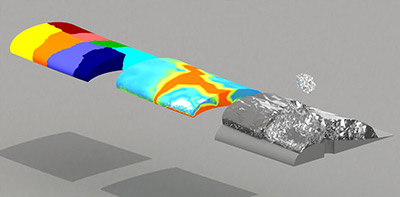
The modeling of ice fracture on surfaces protected against ice is being carried out as part of the TRICEPS project - a cooperation between researchers in the fields of energetics and materials/structures. An experiment to validate the simulation tools was done in 2022 in ONERA's icing wind tunnel. Highly controlled mechanical stresses will be applied to a realistic ice block geometry to induce its fracture. The experiment has been dimensioned using simulations with the Z-set code (figure) - a first for this type of costly 3D calculation.
Heat transfer and material degradation
DMPE Emmanuel Laroche, Gillian Leplat (@onera.fr).
- Conduction
- Forced convection
- Natural convection
- Radiation
- Impacting jets
- Ablation
- Pyrolysis
- Oxidation
Examples
 REMED Experimental research and modeling of two-phase heat exchangers Development, implementation and validation of numerical models dedicated to water-steam flows in heat exchangers, taking into account phase change and ballooning. Creation of a bench representative of a real exchanger for validation and creation of a database.
REMED Experimental research and modeling of two-phase heat exchangers Development, implementation and validation of numerical models dedicated to water-steam flows in heat exchangers, taking into account phase change and ballooning. Creation of a bench representative of a real exchanger for validation and creation of a database.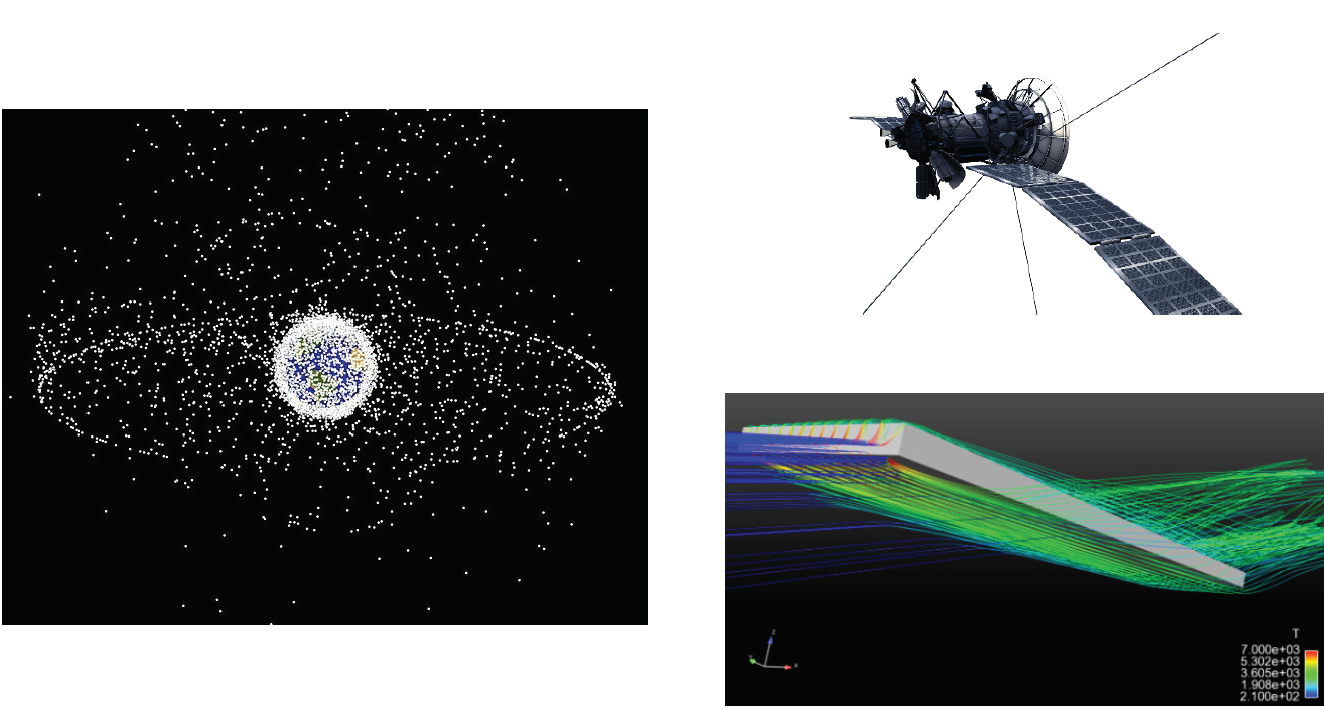
DESORBITER Experimental studies and modeling of the degradation of space debris during atmospheric re-entry To better understand, model and simulate the thermomechanical degradation of space debris during re-entry, and to overcome scientific and technical obstacles in aerothermodynamics, thermodynamics, structural mechanics and fluid-structure coupling.






